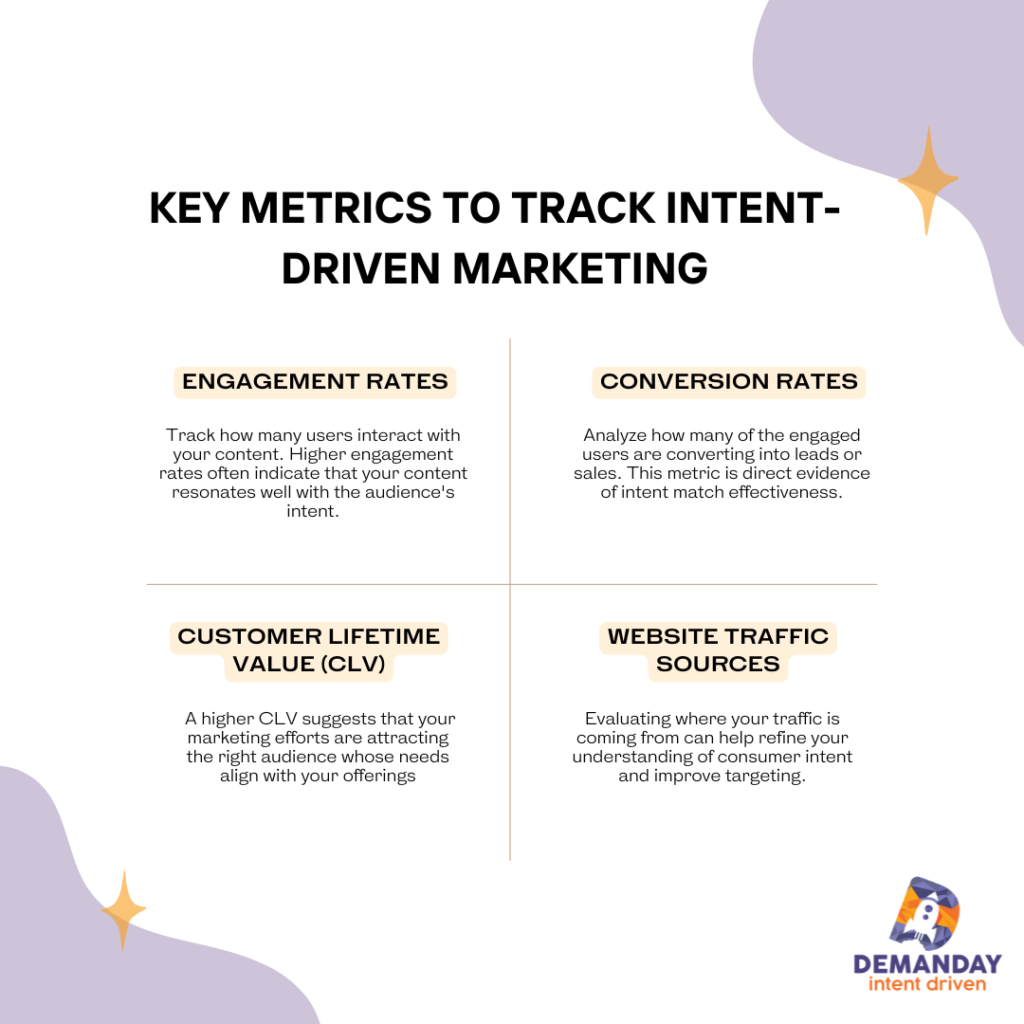In an era where consumers have access to large amounts of information and choices, businesses find themselves pressed to go beyond traditional marketing strategies One of the most effective approaches is intent driven marketing, which focuses on understanding and leveraging user intent to drive engagement and conversions. By aligning marketing efforts with what potential customers are actively seeking, companies can create more relevant and personalized experiences.
Recent studies indicate that 70% of marketers believe intent-driven strategies significantly enhance customer engagement. This underscores the importance of understanding not just who your audience is, but what they want at any given moment. For instance, Clearbit’s research reveals that companies employing intent-based marketing see a 30% increase in lead generation effectiveness compared to traditional methods.
Understanding Intent-Driven Marketing
Intent-driven marketing focuses on understanding potential customers’ intentions, needs, and behaviors. By analyzing data patterns, marketers can identify what consumers are searching for, why they’re searching for it, and what stage of the buying journey they are currently in. Instead of projecting a one-size-fits-all message, intent-driven marketing tailors strategies to meet specific consumer demands.
The Shift from Traditional Marketing
Traditional marketing often revolves around push strategies where businesses broadcast messages to a broad audience to capture leads. However, with the advent of digital technology, consumers have gained more control over their purchasing decisions. As a result, businesses have had to pivot towards strategies that are more aligned with consumer behavior rather than trying to influence it actively.
Recent surveys indicate that 83% of marketers are planning to invest more in buyer intent data in the upcoming years. This underscores a significant shift from traditional marketing methods toward more nuanced, data-driven approaches.
Key Metrics to Track Intent-Driven Marketing
When implementing an intent-driven marketing strategy, certain key performance indicators (KPIs) can help measure effectiveness:

The Role of Data in Intent-Driven Marketing
Data is the cornerstone of intent-driven marketing. By harnessing user data—such as browsing history, search behavior, and interaction with prior campaigns—marketers can gain insights into consumer intentions. Several tools help businesses analyze and extract meaningful insights from this data.
For example, companies can leverage intent data providers like Bombora or G2 that aggregate insights on potential customers’ research. With these insights, businesses can craft tailored campaigns that speak directly to the needs and preferences of their target audience.
Recent Data on Intent-Driven Strategies
A report by the Data & Marketing Association revealed that marketers who use data-driven methods are six times more likely to be profitable year-over-year. Furthermore, businesses that personalize their marketing messages based on intent data can increase engagement by 20% and conversions by up to 10%.
Moreover, a recent survey conducted in 2023 indicated that 76% of consumers prefer purchasing from brands that offer personalized experiences. This data illustrates not just a trend but a shift in consumer expectations, highlighting the necessity for brands to understand and act upon user intent.
Future Predictions for Intent-Driven Marketing
As we move forward, the future of intent-driven marketing is poised for growth and innovation. Here are some predictions for what lies ahead:
Increased Use of AI: Artificial intelligence will play an increasingly vital role in processing large volumes of intent data, enabling even more personalized marketing strategies. AI can optimize campaigns in real time, making adjustments based on consumer behavior.
Integration of Multi-Channel Approaches: Businesses will begin to blend multiple channels such as social media, email, and website interactions into a cohesive strategy that holistically addresses consumer intent.
Focus on Privacy and Data Ethics: With the growing emphasis on consumer privacy, marketers must navigate the space carefully. Transparent data collection practices will increase consumer trust and engage them more effectively.
Emphasis on Retention: As customer acquisition costs continue to rise, brands will focus equally on retaining existing customers through intent-driven strategies tailored to enhance user experience and satisfaction.
Expansion of Real-Time Data Utilization: Utilizing real-time data to refine marketing strategies will become increasingly prevalent, allowing brands to react promptly to consumer behavior as it occurs.
Implementing Intent-Driven Marketing in Your Business
To successfully implement an intent-driven marketing strategy, consider the following steps:
Invest in Data Analytics: Employ data analytics tools to gather and analyze consumer behavior. This foundational step will guide all subsequent marketing efforts.
Segment Your Audience: Divide your consumer base into segments based on their behaviors and interests. This approach enables targeted messaging that resonates on a personal level.
Create Valuable Content: Produce high-quality content that addresses consumer pain points, questions, and desires. Whether it’s through blog posts, videos, or guides, providing value is key.
Test and Iterate: A/B testing can offer valuable insights into what messaging or content works best for different audience segments. Use the data collected to continually refine your approach.
Monitor and Adapt: Constantly track your KPIs and remain agile in your marketing strategies. Industries and consumer preferences evolve; adapt your tactics to stay relevant.
In an increasingly competitive marketplace, understanding consumer intent is no longer a luxury but a necessity. Intent-driven marketing allows businesses to connect with audiences in a personalized and meaningful way, enabling them to enhance customer experiences and drive growth. As we look towards the future, data and technology will become more prominent in shaping these strategies, offering businesses new avenues toward success.
Incorporating intent-driven methodologies offers a pathway to sustainable growth that aligns with business goals and consumers’ evolving expectations. Embrace intent-driven marketing now and position your business for accelerated growth in the years to come.
